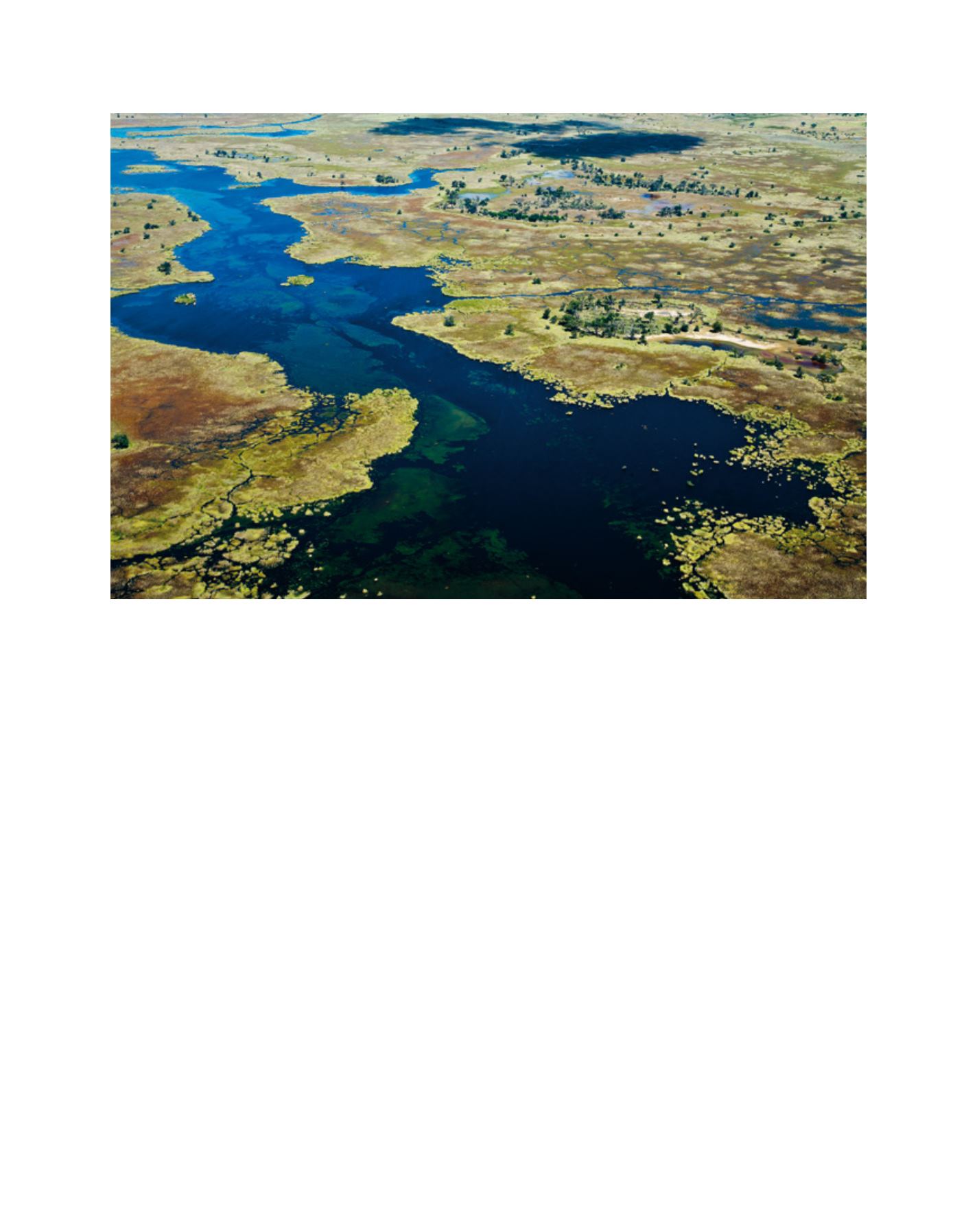

[
] 200
W
ater
C
ooperation
, S
ustainability
and
P
overty
E
radication
the Okavango – as different eco-environments need
different approaches to wastewater treatment – and
recommended that requirements for managing liquid
waste should become stricter from dry land to wetland.
In open fresh water and perennial swamps, there should
be no discharge of liquid waste at all.
The guidelines also took account of the enormous
variation in the amounts of liquid waste produced and
treated, ranging from large volumes by council waste-
water treatment plants, schools, hospitals, commerce
and hotels, to small volumes by lodges and camps, camp
sites, mobile operators, rural communities and private
homes. The different set ups vary in the volume of waste
they generate and each requires different guidelines.
The guidelines considered site conditions, expected
wastewater generation rates, desirable effluent quality,
construction costs and maintenance requirements –
everything from selecting sites for treatment plants
to developing, operating and decommissioning them.
Sophisticated liquid waste treatment facilities would
need to be serviced and maintained by skilled staff and
would create difficulties in small isolated communities.
In these cases, low-maintenance septic tank soak-away
systems could be more reliable. Powered sludge systems
would not be suitable for off-grid areas or where solar
electricity would be too costly to install.
As well as the need to manage liquid waste, there
is a need to manage the storage and movement of
Open and inclusive discussions arranged by GWP Botswana as
part of the two projects allowed these different parties to voice their
concerns and explore ways of keeping the risk of pollution to a
minimum. Representatives of the tourist industry, for example,
explained that their difficulties in dealing with liquid waste lay in
operating in remote areas, the plethora of different institutions they
had to deal with and unfamiliarity with some of the technical issues
in treating liquid waste.
The outcome of the discussions was agreement that it would
be useful to produce a set of guidelines for managing liquid waste
in the Okavango Delta Ramsar Site. Following up on this, the
Integrated Water Resource Management-Water Efficiency Project,
GWP Botswana and Biokavango Project approached the North West
District Council, Department of Water Affairs and the Department
of Waste Management and Pollution Control with a proposal to
develop such a set of guidelines. The guidelines would be a step
towards safeguarding water quality and the environment by mini-
mizing contamination from inadequately treated sewage and other
liquid waste.
A Botswana consultancy Ecosurv was tasked with developing the
guidelines. In drawing up the guidelines, the consultants ensured
they conformed to national standards and international obligations.
The Okavango Delta Management Plan Waste Management Strategy
and a 2008 Biokavango Project Report assessing liquid waste
systems in tourism establishments and transport, and handling and
storage of hazardous substances in the Okavango Delta, provided
a solid foundation for Ecosurv to develop recommendations for
the guidelines. The guidelines considered the main ecotypes in
The Okavango Delta Ramsar Site in Botswana is being protected from the risk of pollution
Image: Claudia Uribe/Photodisc/Getty Images


















